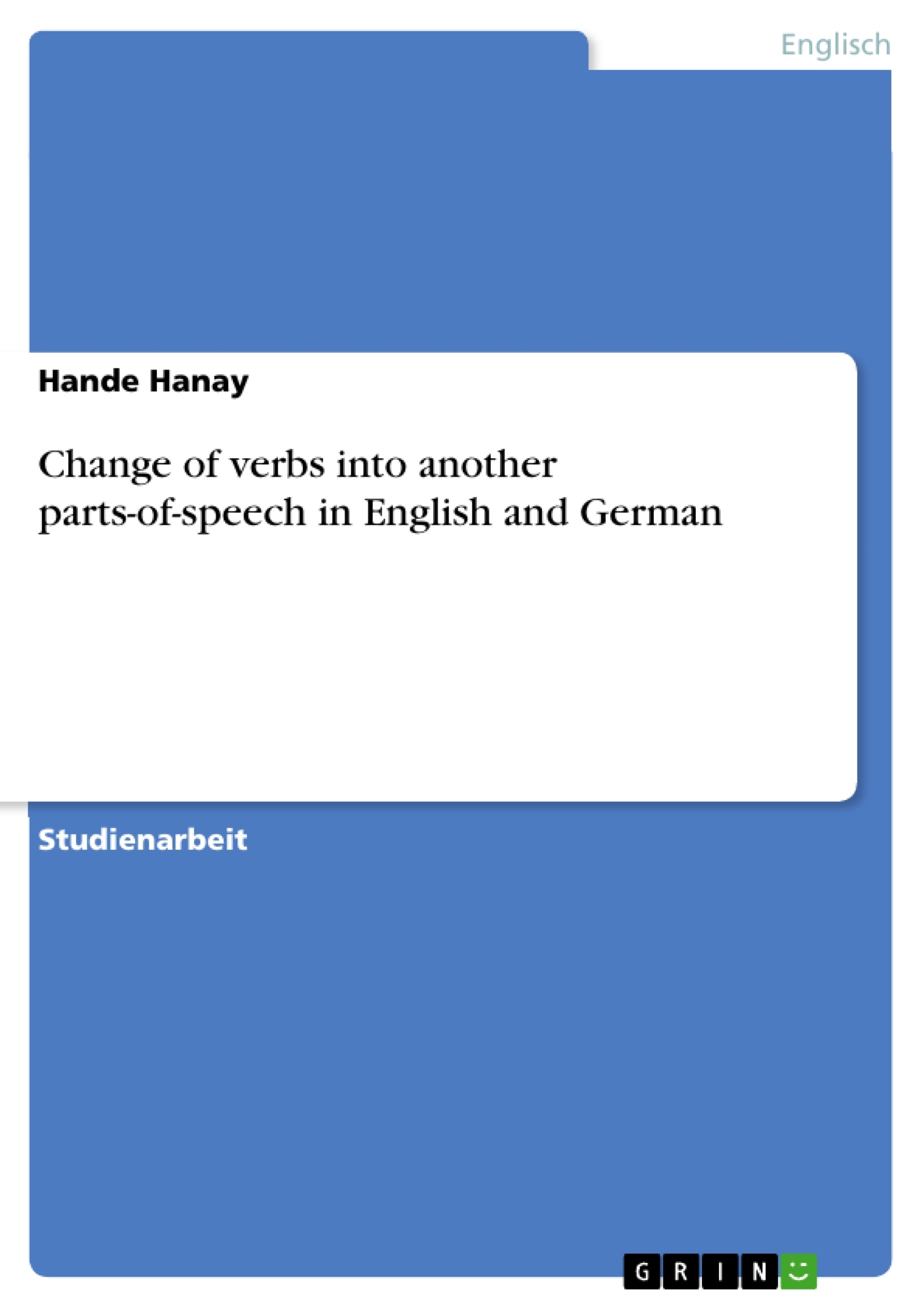The topic of my term paper is the change of word classes, particularly the examination of verbs and their changes into another parts-of-speech in the translation directions from English to German and from German to English. This topic is of great importance in linguistics, as the word class changes in English and German are influenced by many factors. To understand and to analyse the word class change, many linguistic features, such as grammatical relations within clauses, need to be studied and known in the individual languages, which are also studies in this term paper.
Inhaltsverzeichnis
- Introduction
- Method section
- Overview of the method
- Data extraction
- Inferential statistics
- Results and discussion
- Contingency table
- Analyse of shifts
- Bar graph of shifts
- Conclusion
Zielsetzung und Themenschwerpunkte
Diese Arbeit untersucht die Veränderung von Wortklassen, insbesondere die Transformation von Verben in andere Wortarten, in der Übersetzung von Englisch nach Deutsch und umgekehrt. Das Ziel ist es, die Häufigkeit und Art dieser Veränderungen in den beiden Sprachrichtungen zu analysieren und mögliche Faktoren zu identifizieren, die diese beeinflussen.
- Untersuchung der Wortklassenverschiebung von Verben in Englisch und Deutsch
- Analyse der Häufigkeit und Art der Verschiebungen in beiden Übersetzungsrichtungen
- Beurteilung des Einflusses von grammatikalischen und lexikalischen Besonderheiten beider Sprachen auf die Wortklassenverschiebung
- Vergleich der Ergebnisse mit bestehenden Theorien zur Wortklassenverschiebung und Translation
Zusammenfassung der Kapitel
Das erste Kapitel führt in die Thematik der Wortklassenverschiebung ein, beleuchtet die Relevanz des Themas für Sprachwissenschaft und Übersetzungswissenschaft und stellt die Forschungsfrage sowie die Hypothesen vor. Das zweite Kapitel beschreibt die angewandte Methode, einschließlich der Datenquelle (CroCo Corpus), der Datenerhebung und der statistischen Analysemethoden. Das dritte Kapitel präsentiert die Ergebnisse der Analyse, die Häufigkeit und Art der Wortklassenverschiebungen in beiden Übersetzungsrichtungen sowie eine Diskussion der Ergebnisse im Kontext der relevanten Literatur.
Schlüsselwörter
Wortklassenverschiebung, Translation, Englisch, Deutsch, Verb, Nominalisierung, Grammatikalische Metapher, Corpus-basierte Analyse, CroCo Corpus, Inferenzstatistik.
- Citation du texte
- Hande Hanay (Auteur), 2013, Change of verbs into another parts-of-speech in English and German, Munich, GRIN Verlag, https://www.grin.com/document/278403



